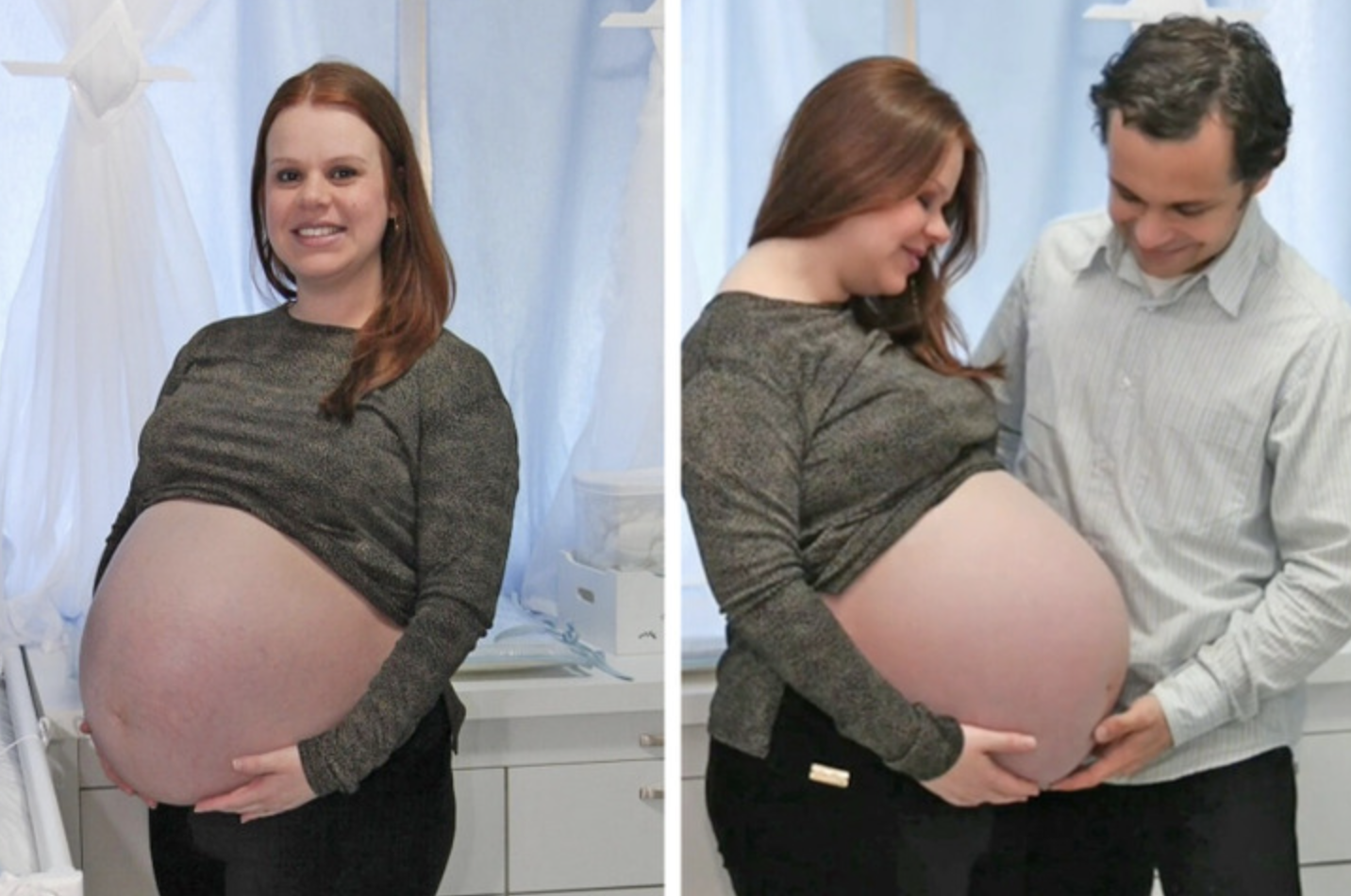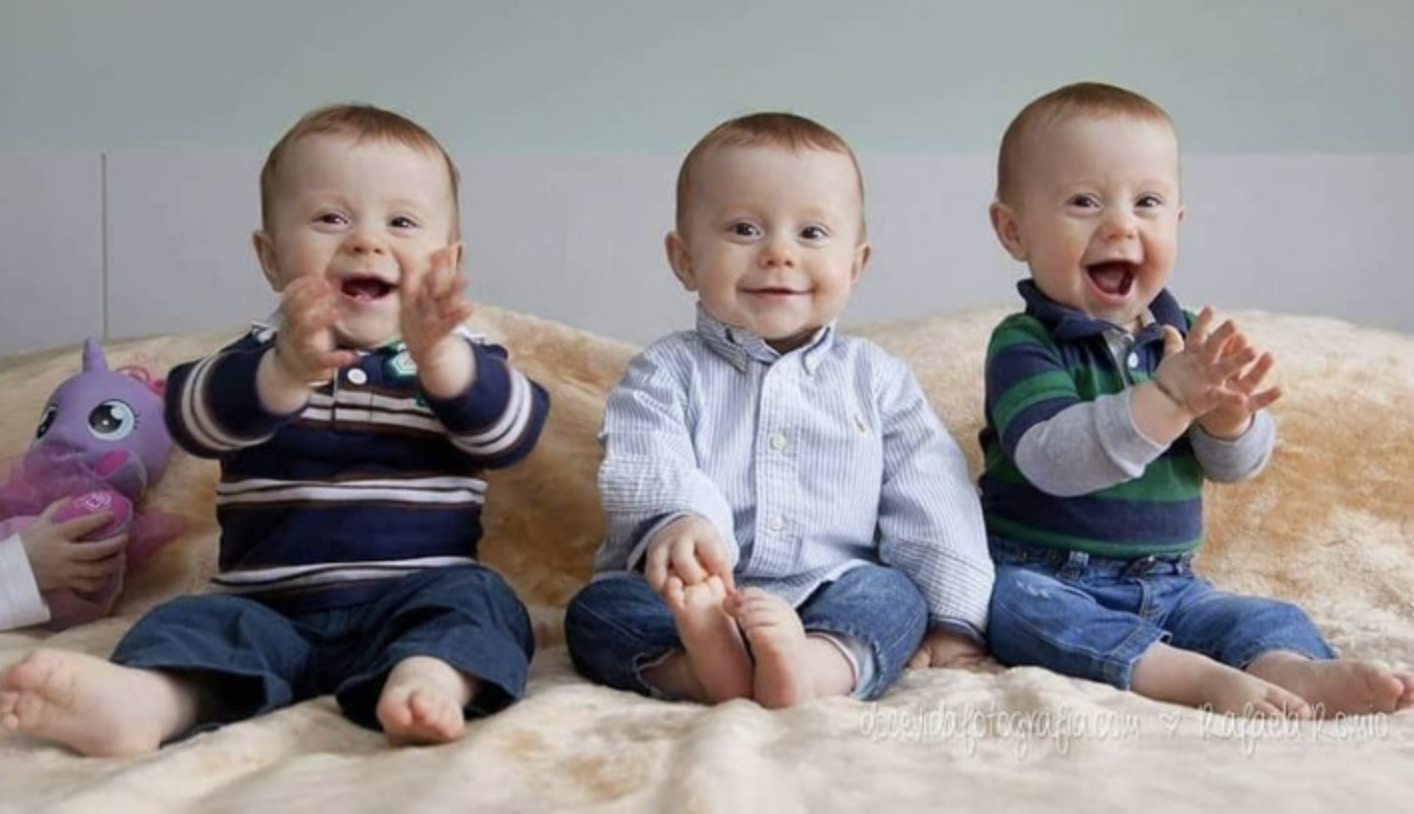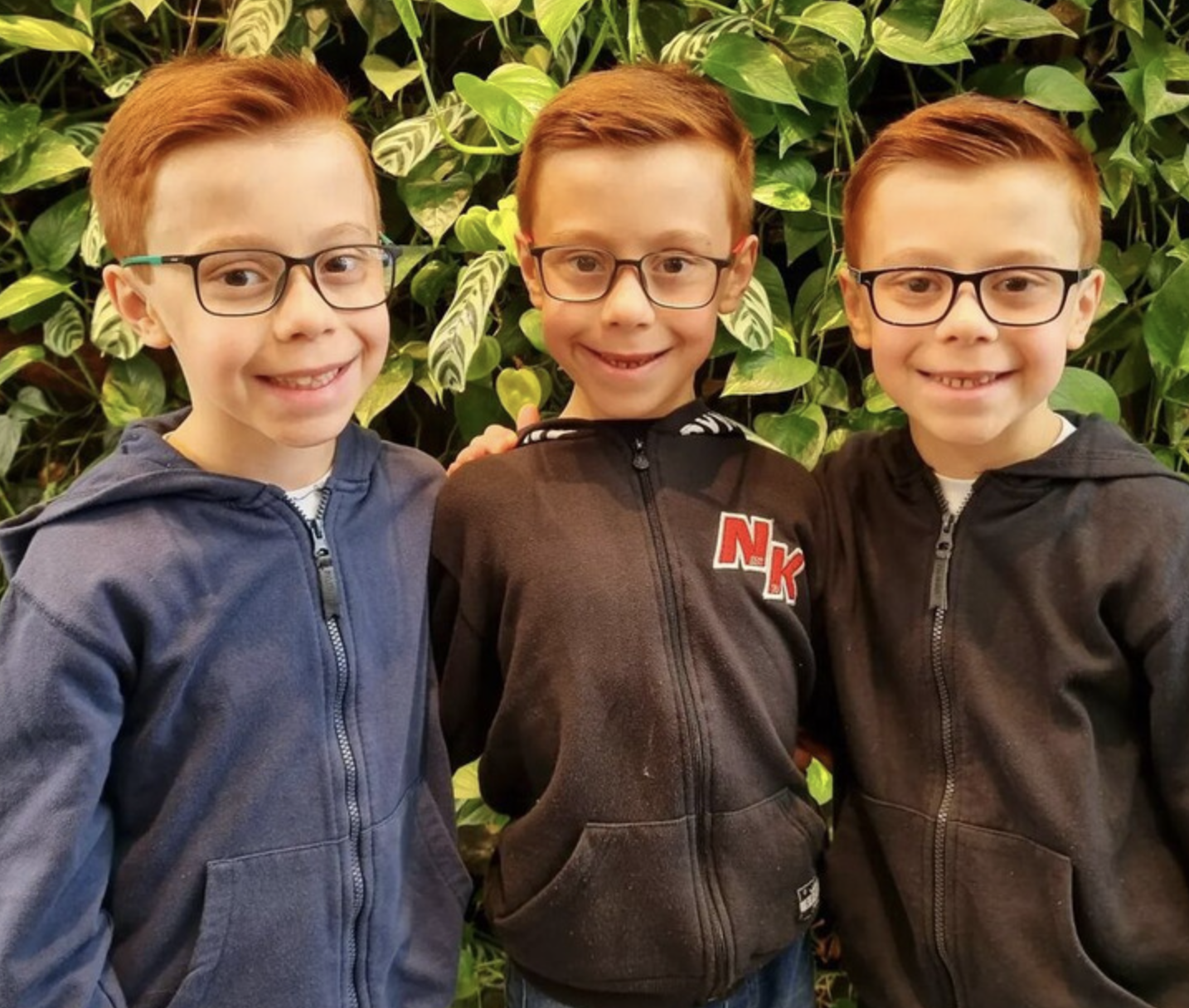Michelle and Mauricio Kaiser intended to have a second child, but while pregnant, they discovered they were carrying triplets. The most intriguing aspect is that their boys are 100% identical, which occurs rarely once in 10,000 cases. Even their parents struggle to tell them apart.
A voyage that began with strong emotions.The story begins with the couple’s desire to extend their family, when their eldest daughter, Monica, was only a year and a half old. They had no idea how amazing their lives would become when a routine pregnancy test revealed three heartbeats echoing within Michele’s womb. What makes it even more unusual is that Michele’s pregnancy was entirely natural and did not require any treatment.

The announcement of triplets sent shockwaves through the Kaiser household, eliciting a range of emotions from incredulity to tremendous joy. Michele says that when they found out about the pregnancy, they had no idea it would result in three children.
One more surprise was about to arrive.The couple faced unanticipated challenges as they handled the complications of a triple pregnancy. Despite their initial amazement, Michele and Mauricio welcomed the remarkable voyage and joyfully awaited the arrival of their trio.
As the pregnancy developed, medical disclosures added levels of mystery to an already incredible story. When the couple learned that two of the infants were created from different eggs, they knew they would have fraternal twins who bore an eerie likeness to two of their siblings.
However, as time passed and all three children grew to be so similar, they decided to look further. A further DNA test over a decade later showed a startling truth: Matheus, Murilo, and Marcelo were not simply brothers; they were 100% identical triplets, a condition so uncommon that it contradicted conventional thought.

Despite the challenges of having triplets, Michele and Mauricio accepted their roles as parents with elegance and determination. Despite numerous doctor’s appointments, sleepless nights, and moments of anxiety, their unflinching dedication to their children remained unshaken.
As the triplets matured, so did their distinct personalities. But one thing is certain between them: they want to continue to look like each other. Michelle recalls once telling them that she wanted them to wear varied hairstyles to embrace their individual personalities. However, they elected to keep cutting their hair the same way they had always done, with one twin looking exactly like the other.
While their physical similarities may confuse even the most astute observer, Michele and Mauricio devised a secret method to distinguish each child: the color of their spectacles. Marcelo wears red, Murilo wears green, and Matheus wears blue.
Today, the family actively controls their Instagram account, sharing insights into their lives. They are pleasant and lively, and they enjoy taking holidays and having fun together. They do not appear to find raising four children to be a burden. Although, as Michelle confessed, she hardly remembers herself between the ages of 31 and 33. That’s precisely when the triplets were born. It can indeed be tough for her and her husband at times.
However, there are moments that brighten even the most challenging days. She once visited a glasses store with her sons. Someone said to her, “Triplets?” That’s a blessing!» Michelle writes on her page: «Sometimes we forget how wonderful it really is. I’m lucky to have 4 wonderful children who, besides being my kids, are my best friends today. We are truly happy.»Identical triplets are an exceptionally rare occurrence. The formation of identical triplets, also known as monozygotic triplets, involves a single fertilized egg splitting into three separate embryos. This splitting process can occur at different stages of development, resulting in three genetically identical individuals.

The rarity of identical triplets comes from the uncommonness of the spontaneous division of a fertilized egg into multiple embryos. According to medical literature and statistics provided by experts in the field, the incidence of identical triplets is estimated to be as low as about 1 in ten thousand. This rarity makes identical triplets one of the rarest forms of multiple births.
Factors such as genetic predisposition, maternal age, and fertility treatments can influence the likelihood of conceiving identical triplets. But even under optimal conditions, their occurrence remains extremely rare. The spontaneous and simultaneous development of three genetically identical embryos represents a remarkable anomaly in the natural process of human reproduction.

Identical triplets are a rare phenomenon, whereas identical twins are more commonly seen. Take a look at these young women who have earned the title of the most identical twins in the world.
